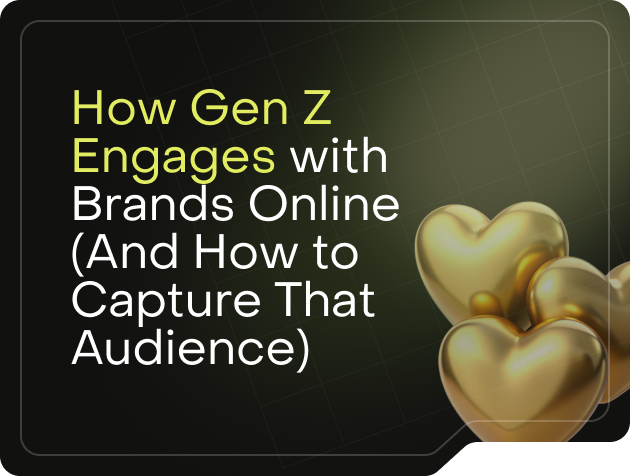Misalignment between brand and product messaging is more than a marketing mistake. It’s a growth killer.
When your overarching brand identity contradicts your product communications, your audience experiences confusion, distrust, and hesitation. In competitive markets, that hesitation can cost you conversions, loyalty, and market share.
Brand messaging tells the big-picture story of who you are, what you stand for, and why you exist. Product messaging zooms in on what a specific offering does, why it matters, and how it solves your audience’s needs.
For maximum impact, these two must work in lockstep.
This guide breaks down the difference, the risks of misalignment, and the exact steps you can take to ensure your messaging drives both brand equity and revenue.
TL;DR: What You Need to Know About Brand and Product Messaging
- Brand messaging = your company’s narrative, values, tone, and market position.
- Product messaging = how a specific offering delivers on the brand promise.
- Misalignment causes confusion, wasted marketing spend, and weaker sales.
- Aligned companies see 67% higher conversion rates.
- Consistency from brand to product builds trust, accelerates sales, and strengthens loyalty.
|
Understanding the Difference Between Brand Messaging and Product Messaging
Before diving into strategies for alignment, it’s essential to clearly define each type of messaging so you can see exactly where they intersect and where they risk drifting apart.
By establishing a clear distinction, you create the foundation for all subsequent marketing, sales, and brand-building activities.
What Is Brand Messaging?
Brand messaging defines your company’s voice, values, and promise. It articulates why you exist, how you want to be perceived, and how you connect with your audience.
Key elements include:
- Mission and values that demonstrate your purpose and core beliefs.
- Target audience positioning to clarify exactly who you serve and why.
- Brand promise and personality that communicate your unique value and voice.
- Tone of voice and style guidelines to maintain consistency across channels and formats.
Defining your brand messaging isn’t about detailing specific features or services. Instead, it’s about conveying your overarching identity in a way that resonates deeply with your market.
What Is Product Messaging?
Product messaging focuses on a specific offering, translating your overarching brand narrative into tangible, compelling value propositions for that product or service.
Key elements include:
- Features and benefits that explain precisely what the product does and why it matters.
- Unique aspects that set it apart from key competitors.
- Audience-specific pain points are addressed to show relevance and urgency.
- Proof points, such as case studies, testimonials, and performance data, validate your claims.
When executed well, product messaging acts as a natural extension of your brand messaging, reinforcing the same values and tone while providing the specificity needed to drive decisions.
Why Misalignment Hurts Your Brand and Bottom Line
Misalignment between brand and product messaging can create cracks in your customer journey that, over time, erode trust, waste resources, and weaken revenue streams.
Each of the following consequences stems from a breakdown in consistency, and each one has a direct impact on growth potential.
It Confuses Your Audience
When your homepage projects an image of premium service and industry authority, but your product page reads like a bargain-basement pitch, the disconnect is jarring.
This inconsistency forces prospects to question your credibility and your ability to deliver on promises. In markets where buyers have endless options, even slight moments of doubt can prompt them to consider competitors.
Beyond perception, confusion often leads to longer decision cycles.
Potential customers may spend more time verifying whether your offering aligns with your stated brand values, which can delay conversions or lead to abandonment of the process altogether.
It Weakens Sales and Marketing Impact
According to LXAHub, companies with strong alignment between messaging layers see significantly higher close rates and more efficient pipelines.
Without that alignment, marketing teams risk generating leads that sales teams can’t convert because the product positioning doesn’t reflect the initial brand promise.
This misfire wastes both ad spend and sales resources, creating a cycle where teams are working hard but not in harmony. Over time, the gap between brand and product narratives becomes a structural weakness, which lowers campaign ROI and damages internal trust between departments.
It Damages the Customer Experience
Customer experience begins with setting the right expectations, and if the product fails to deliver the value promised by your brand’s messaging, dissatisfaction is inevitable. Buyers who feel misled are less likely to repurchase, refer others, or engage positively with your brand.
The damage extends beyond individual transactions. Disappointed customers can become detractors, sharing negative feedback publicly and diminishing your reputation.
This negative feedback loop not only reduces retention and lifetime value (LTV) but can also make acquisition more expensive as your brand works harder to overcome negative perceptions.
How Aligned Messaging Improves the Customer Journey
When brand and product messaging work in harmony, every interaction reinforces your value and strengthens the path from awareness to loyalty.
Fostering brand consistency directly influences how potential customers perceive you, how quickly they make buying decisions, and how likely they are to return or refer others.
Builds Trust from First Touchpoint
When your brand narrative aligns seamlessly with your product positioning, prospects perceive you as credible, consistent, and intentional. Here’s why:
- Consistency in tone and message helps set accurate expectations from the start.
- Aligned messaging reassures prospects that your offer matches your brand promise.
Over time, this trust grows. Each experience that matches the message reinforces the customer’s belief in your brand, reducing skepticism and increasing their willingness to engage.
Shortens the Path to Purchase
Clear, consistent messaging reduces confusion and hesitation, enabling prospects to make informed decisions more quickly.
Potential buyers spend less time questioning fit and more time moving toward purchase when they can easily connect the dots between your brand and product messaging because:
- Unified messaging eliminates conflicting information that can slow decision-making.
- Prospects can quickly understand both the “why” of your brand and the “how” of your product.
This efficiency benefits both the customer and your internal teams, streamlining the sales cycle and improving conversion rates without additional marketing spend.
Improves Retention and Advocacy
Customers who experience the value they were promised become repeat buyers and advocates, fueling organic growth.
Consistency between what is promised and what is delivered turns transactions into relationships. With the right messaging, you can:
- Meet or exceed expectations increases satisfaction and loyalty.
- Make connections with loyal customers who are more likely to share positive experiences and encourage others to use your products.
By aligning your messaging, you create a feedback loop where satisfied customers reinforce your brand authority, making it easier to attract and convert new prospects.
4 Steps to Align Brand and Product Messaging for Success
Aligning brand and product messaging is an ongoing process that requires structure, collaboration, and consistent evaluation. These steps can give you a practical roadmap for building and maintaining that alignment.
1. Start with a Unified Brand Messaging Framework
Your framework should serve as the single source of truth for your brand’s vision, values, differentiators, and audience insights. The goal is to create a living document that your teams can use every day.
- Define your mission statement and the core values that guide all your decisions.
- Identify your primary and secondary audiences with detailed personas.
- Document your key differentiators and brand promise in clear, simple language.
After creating your framework, ensure it is accessible to everyone and revisit it quarterly to reflect your current positioning.
2. Map Product Messaging to the Brand Narrative
Every product statement should ladder directly back to your brand’s core values and positioning.
The Product Marketing Alliance recommends crafting product-specific value propositions that still echo the overarching brand story.
- For each product, list its features and benefits side by side with the brand values they reflect.
- Use consistent tone, terminology, and structure across product and brand messaging.
Before launching any new campaign or product page, run a quick alignment audit to ensure the narrative resonates with your brand identity.
3. Create Cross-Functional Collaboration Between Teams
Messaging alignment is impossible if marketing, sales, and product teams operate in silos.
These groups must share language, documents, and maintain a regular cadence of communication.
- Hold monthly alignment meetings to review messaging consistency.
- Use shared documentation and templates for all public-facing content.
- Encourage feedback loops so sales insights influence marketing copy and vice versa.
4. Test and Refine Messaging Regularly
Messaging should evolve in response to market conditions, customer expectations, and product advancements. Consistent refinement ensures your brand stays relevant and impactful.
- Collect customer feedback via touchpoints like surveys, interviews, and reviews.
- Monitor analytics for conversion rates, time on page, and bounce rates as indirect indicators of messaging health.
- Use A/B testing on headlines, CTAs, and product descriptions to identify what resonates.
Pro tip: Set a biannual messaging review that brings together leaders from all departments to analyze performance data and refresh both brand and product narratives accordingly.
Frequently Asked Questions About Messaging Alignment
How often should we review our brand and product messaging?
A best practice is to review your messaging at least twice a year to ensure it reflects your current positioning and market trends.
You should also revisit it whenever you create a new product, expand into a new market, or undergo a significant brand shift to maintain consistency and relevance.
Can product messaging ever differ from brand messaging?
Yes, product messaging can adopt a more specific tone or target a narrower audience segment.
However, it must always be rooted in and consistent with the brand’s core values, promise, and overarching narrative to prevent mixed signals.
What’s the fastest way to spot misalignment?
A quick check is to compare your homepage copy to your product pages.
If they feel like they’re from different companies or use vastly different tones, you likely have a messaging gap that needs immediate attention.
Who should own messaging alignment?
Ownership typically falls to a brand strategist or marketing leader who oversees positioning and communication standards.
That said, accurate alignment requires cross-functional input from sales, product, and leadership to ensure every customer touchpoint stays consistent.
How does messaging alignment impact SEO and digital campaigns?
Strong alignment ensures consistent use of keywords, tone, and positioning, which helps search engines better understand your brand.
This consistency improves search visibility, click-through rates (CTR), and conversion rates, making your digital campaigns more effective and efficient.
Make Messaging Alignment Your Competitive Edge With AVINITIV
Brands that align their messaging get remembered, trusted, and chosen. At AVINTIV, we’ve seen brands transform their sales cycles, retention rates, and market presence simply by unifying their narrative.
Our approach includes comprehensive messaging audits to uncover gaps and inconsistencies, leadership and team workshops to unify voice and direction, data-driven optimization to boost conversions and strengthen loyalty, and full integration into every campaign and launch to ensure consistency across the customer journey.
If your brand and product messaging feel like they’re speaking different languages, you’re losing opportunities every day.
Let’s align them for clarity, conversions, and growth. Contact AVINTIV today.









